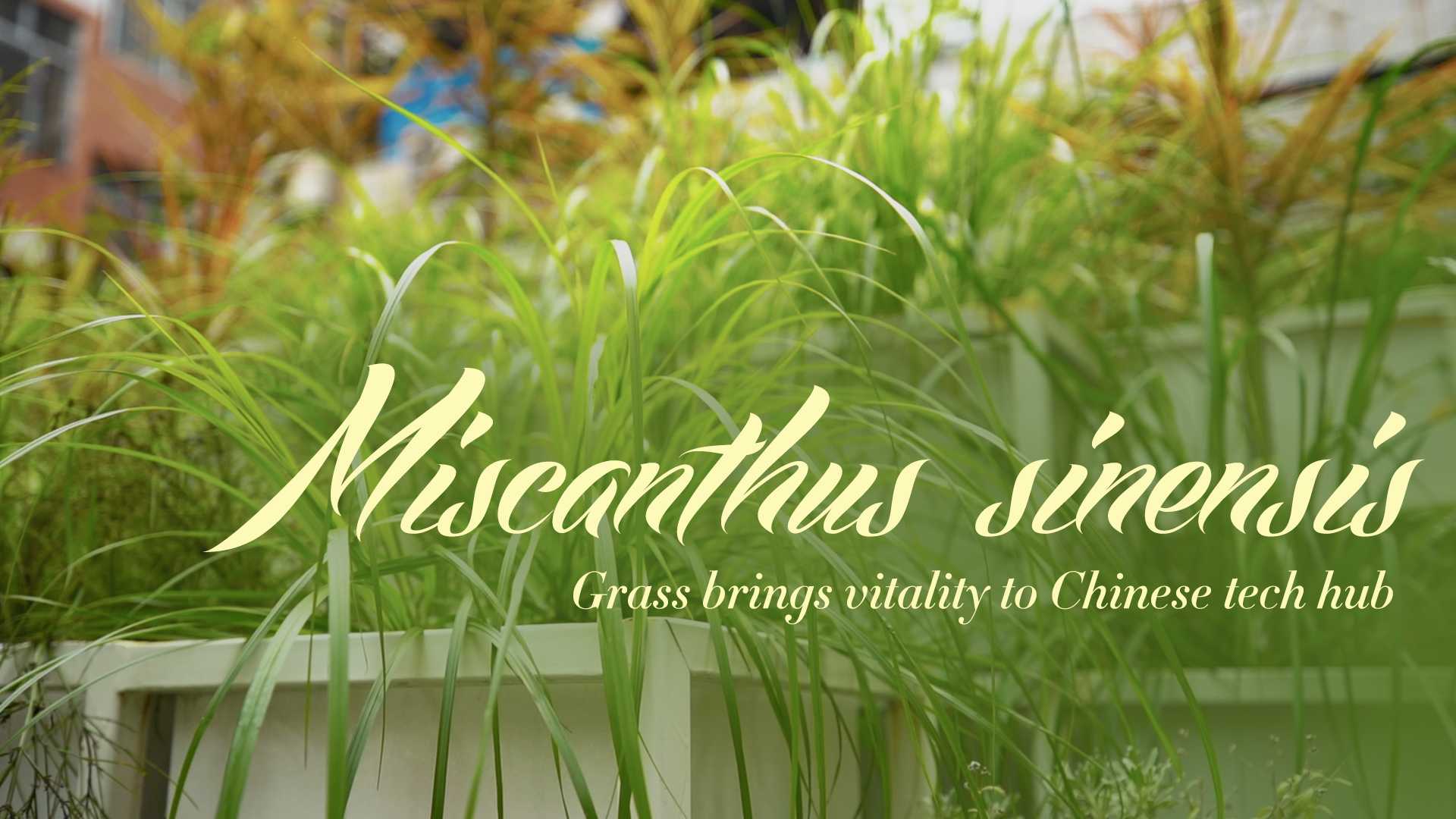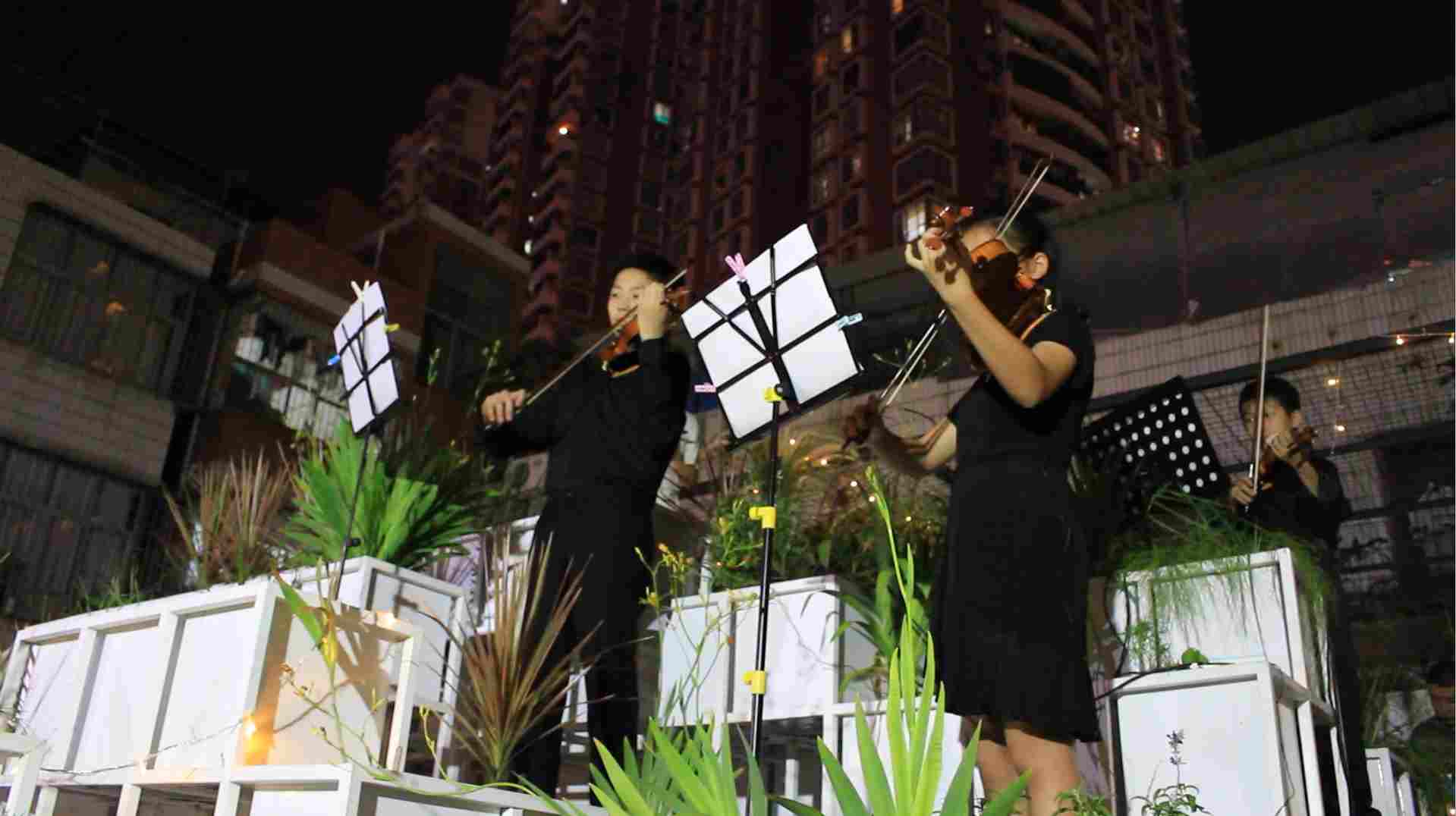
Culture China
10:23, 06-May-2019
Miscanthus sinensis: Grass brings vitality to Chinese tech hub
CGTN
04:29

My name is Miscanthus sinensis, also known as Chinese silver grass or Japanese silver grass. I'm a herbaceous perennial grass from the Poaceae family. To be frank, I'm only a weed, seen in many people's eyes as lowly and useless.
But in the roof greening project at Gangxia in Shenzhen City, I and my fellows played an important role. With advantages of low maintenance, energy consumption and cost, I was selected as the base plant for the project, together with other plants, to create a comfortable living ecosystem for the residents.

Musicians perform at a concert at the vertical garden in Gangxia, Shenzhen. /Photo courtesy of The Nature Conservancy
Musicians perform at a concert at the vertical garden in Gangxia, Shenzhen. /Photo courtesy of The Nature Conservancy
By this project, the roof has been transformed into a small eco-friendly plaza that is cool in summer and warm in winter. In my spare time, residents come here to appreciate the plants and meet new friends. Not only people, but also birds, insects and small reptiles are attracted here, making the plaza a lively mini eco-park.
Is it difficult to manage such an interesting place? The answer is an absolute "No."

Interconnected plant cubes in the Gangxia project. /CGTN Photo
Interconnected plant cubes in the Gangxia project. /CGTN Photo
Elaborately selected, the plants never take up too much energy and time of the office workers. On each plant box, there is also an overflow hole. Once the rainfall is above the hole, the water moves away to be collected in a container on the second floor. Water stored after a heavy rainstorm can almost support the plants of 140 square meters for over two weeks. I have a great sense of achievement as I can save water and prevent urban waterlogging.

A vertical garden in a living room. /CGTN Photo
A vertical garden in a living room. /CGTN Photo
More plants with similar characteristics to mine are discovered and applied to various urban scenarios to help people get access to nature more easily. Vertical gardening, indoor courtyards and plant rehabs are some of the practices.
Concepts like improving the living environment by eco-friendly methods, relieving city problems and healing the earth have gradually become community goals by consensus. Maybe in the future, people don't need to leave the city to get close to nature, because the city landscape itself will create a new style of nature. In this process, every single family, community, city and country can make their own contributions as I did.
(Cover by Qu Bo.)
Read more about our "If plants had memory" series:

SITEMAP
Copyright © 2018 CGTN. Beijing ICP prepared NO.16065310-3
Copyright © 2018 CGTN. Beijing ICP prepared NO.16065310-3